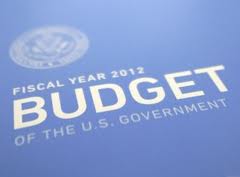 Prevention seems to have become a four-letter word in Washington.
Prevention seems to have become a four-letter word in Washington.
The latest evidence? Last week, the Department of Justice finally announced how much money the states would get through grant programs under the Office of Juvenile Justice and Delinquency Prevention. The numbers are ugly.
Georgia saw its share of the money decline by 28.6 percent, from $3.72 million to $2.66 million. That was a good bit deeper than the nationwide reduction of 17.2 percent, because minimum awards ensured that small states weren’t hit quite as hard.
“This is the first wave of crippling cuts,” Joe Vignati, justice programs coordinator for the Governor’s Office for Children and Families in Georgia, wrote in an e-mail. “We will struggle to maintain.”
In Washington for a meeting of juvenile justice specialists (as well as to pick up an award for his work), Vignati said he was spending some time “educating our congressional delegation on these matters.”
But Congress is faced with increasingly difficult budget choices -- and most members of the Georgia delegation have committed to reducing the deficit only by cutting spending, while avoiding any tax increases.
The wisp of good news is that the programs overseen by Vignati’s office may have a little breathing room. Last week’s announcements regarded money for federal fiscal year 2011, which is already half over.
“We have alerted our juvenile justice partners and this means that in the coming year we will have to look at awarding fewer juvenile justice grants to local communities,” he wrote. “We anticipate being able to continue current projects at existing levels for the next year. These grant funds will affect our operating as we move into the fall of 2012.”
The grants fund juvenile court projects “designed to provide intervention to juveniles that have come to the attention of the system as well as other projects provided by local government/non-profit agencies that aim to prevent juveniles from engaging in delinquent activities,” Vignati wrote. The cuts mean, “we will have less [money] to provide to courts and other child-serving agencies. Realistically, less services for kids and families mean a greater possibility for increased use of secure detention and greater chance of youth ultimately becoming involved with the adult criminal justice system.”
The delinquency program cuts are only the latest in a series of budget reductions in longstanding programs designed to prevent violence among juveniles. Among the others to face cuts are Safe and Drug Free Schools and Communities grants; their disappearance is now rippling through school districts.